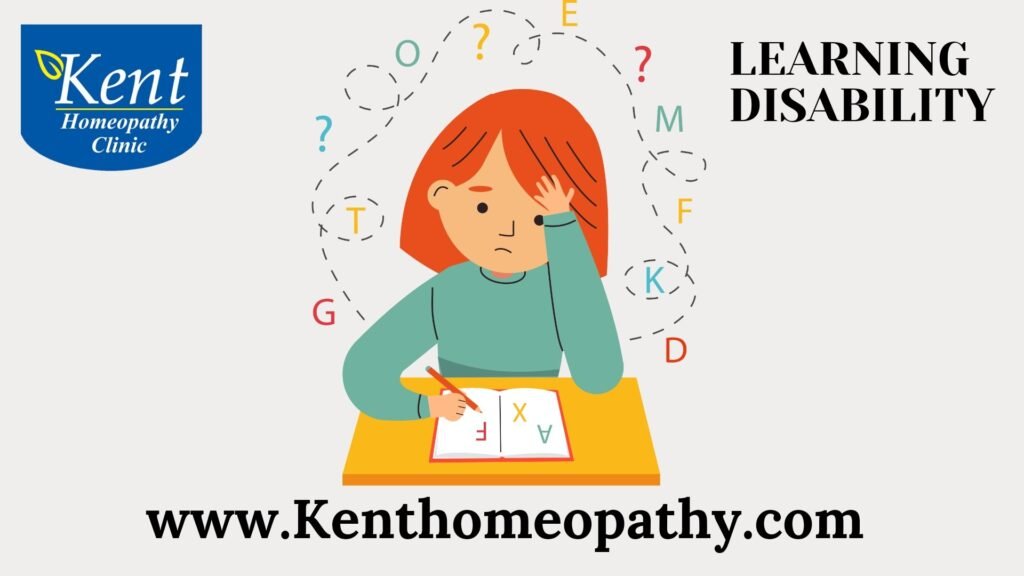Learning disability

Learning Disabilities: Unraveling Symptoms, Causes, and Types
Learning disabilities (LD) are neurodevelopmental disorders that affect an individual’s ability to acquire, process, store, or retrieve information. These challenges can manifest in various ways and impact academic achievement, daily functioning, and social interactions. Understanding the symptoms, causes, and types of learning disabilities is crucial for early identification and tailored intervention strategies.
Symptoms:
- Difficulty Reading: Dyslexia is a common learning disability that affects reading skills. Individuals with dyslexia may struggle with decoding words, recognizing sight words, and reading fluently.
- Difficulty Writing: Dysgraphia is a learning disability related to writing skills. It can manifest as challenges with handwriting, spelling, and expressing thoughts coherently in written form.
- Difficulty with Mathematics: Dyscalculia is a learning disability that affects mathematical abilities. Individuals may struggle with understanding numerical concepts, performing calculations, and solving mathematical problems.
- Difficulty with Attention and Focus: Attention Deficit Hyperactivity Disorder (ADHD) often coexists with learning disabilities. Symptoms include difficulty sustaining attention, impulsivity, and hyperactivity.
- Poor Memory: Some individuals with learning disabilities may experience challenges with memory, both short-term and long-term. This can impact the retention and recall of information.
- Difficulty with Organization: Executive functioning difficulties may lead to challenges in organizing tasks, managing time, and completing assignments.
- Language Processing Issues: Difficulty processing spoken language or expressing oneself verbally may indicate a learning disability impacting language skills.
- Poor Fine Motor Skills: Fine motor difficulties can affect tasks that require precise hand movements, such as tying shoelaces or using scissors.
Causes:
- Genetic Factors: Learning disabilities often have a genetic component, meaning they may run in families. Certain genetic factors may contribute to difficulties in brain development related to learning.
- Neurobiological Factors: Differences in brain structure or functioning can contribute to learning disabilities. These differences may affect how the brain processes information, leading to challenges in learning and academic tasks.
- Premature Birth or Low Birth Weight: Babies born prematurely or with low birth weight may be at a higher risk of developing learning disabilities. The brain’s development may be impacted by these factors.
- Exposure to Toxins: Prenatal exposure to toxins, such as alcohol or certain drugs, can affect fetal brain development and increase the risk of learning disabilities.
- Injuries or Trauma: Traumatic brain injuries or other types of head injuries can result in cognitive impairments, affecting learning abilities.
- Infections during Pregnancy: Infections contracted by the mother during pregnancy, such as rubella or cytomegalovirus, can pose a risk to the developing fetus and lead to learning disabilities.
- Environmental Factors: Adverse environmental conditions, such as exposure to lead or a lack of early stimulation, may contribute to learning difficulties.
- Chronic Medical Conditions: Certain chronic medical conditions, such as epilepsy or chronic ear infections, may impact learning and academic performance.
Types:
- Dyslexia: Dyslexia is a specific learning disability that primarily affects reading skills. Individuals with dyslexia may have difficulty decoding words, recognizing sight words, and spelling.
- Dysgraphia: Dysgraphia is a learning disability related to writing skills. It can manifest as challenges with handwriting, letter spacing, spelling, and overall written expression.
- Dyscalculia: Dyscalculia is a learning disability affecting mathematical abilities. Individuals with dyscalculia may struggle with understanding numerical concepts, performing calculations, and solving math problems.
- Attention Deficit Hyperactivity Disorder (ADHD): ADHD is a neurodevelopmental disorder characterized by difficulties with attention, impulsivity, and hyperactivity. While not exclusively a learning disability, it often coexists with learning challenges.
- Auditory Processing Disorder: Auditory processing disorder affects how the brain interprets and processes auditory information. This can impact language development, reading, and overall academic performance.
- Visual Processing Disorder: Visual processing disorder involves difficulties in interpreting visual information. This can affect tasks such as reading, writing, and understanding visual-spatial relationships.
- Non-Verbal Learning Disability (NVLD): NVLD is characterized by challenges in understanding non-verbal cues, social interactions, and visual-spatial tasks. Individuals with NVLD may excel in verbal abilities but struggle in non-verbal domains.
- Language Processing Disorder: Language processing disorder affects the ability to understand and use language effectively. This can impact reading comprehension, verbal expression, and communication skills.
- Executive Functioning Disorder: Executive functioning difficulties involve challenges with organizational skills, time management, planning, and decision-making.
- Memory-Related Disabilities: Difficulties with memory, both short-term and long-term, can be a standalone learning disability or coexist with other types of learning challenges.
Contact to know more
Contact
Powai: 52, Galleria Mall,
Central Avenue, Hiranandani Gardens,
Powai, Mumbai-400076
Mobile Number: 08291492566
Timings
Monday to Saturday:
11:00 AM to 02:30 PM
06:30 PM to 09:00 PM
